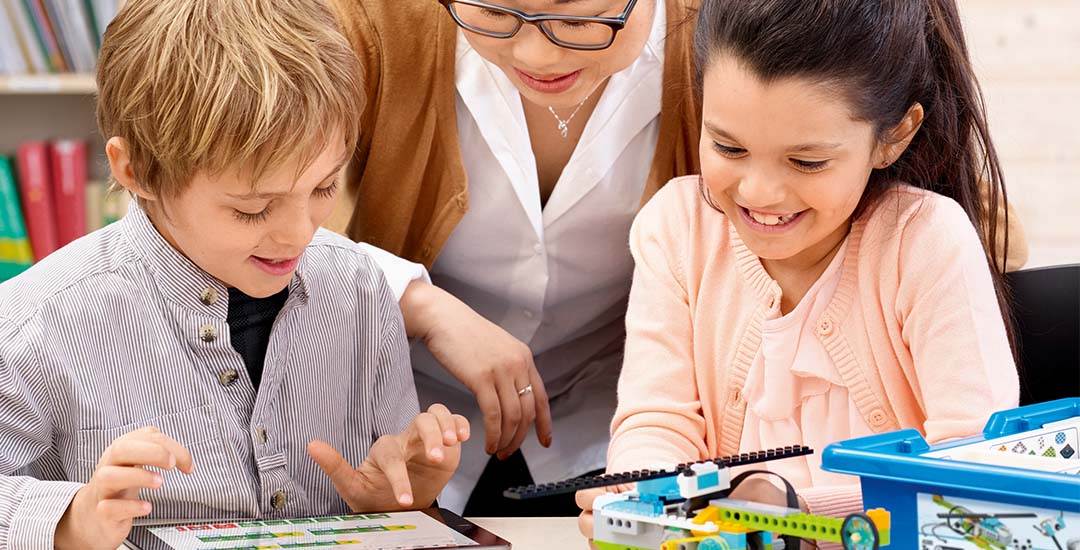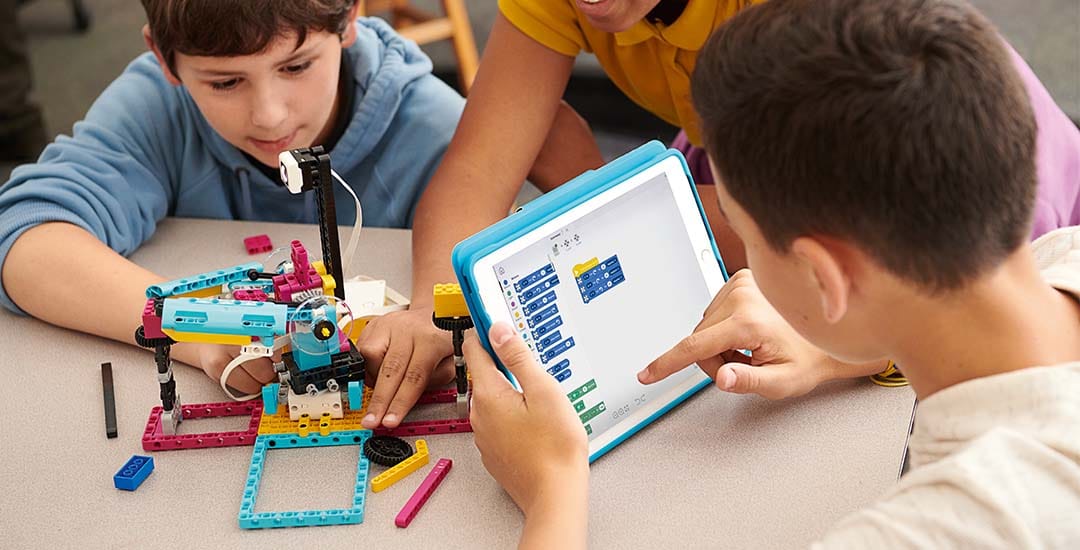Teaching kids to code from an early age can be beneficial and there are so many resources to help both teachers and pupils on their coding and programming journey. In this blog, we’re going to take you on the potential coding journey a child could take at school, starting with children in EYFS all the way up to KS4 and beyond.
We’ll discuss the concepts that might be explored at each stage and what resources could be used to best explore and develop skills in coding and programming. So, strap in and take the Hope school coding and programming journey!
Coding at EYFS and Key Stage 1
It might seem an impossibility to teach coding to five year olds, but there are many stages to a coding journey before typing in numbers, letters and symbols of code.
The idea of technology in school and home is part of the EYFS curriculum and is a great place to start. Following this, introducing very young children to some of the more basic concepts of coding is easier than you might think.
- Function commands – forward, left, right, back
- Algorithms – data input and data output i.e. what you put in and what happens as a result
- Sequencing – completing tasks in a certain order
- Decomposition – breaking down tasks into smaller chunks
You can teach all these concepts without going near coding-specific resources. If you teach coding and programming concepts without using a screen, this is often called ‘unplugged’.
Teaching algorithms to EYFS and Key Stage 1
You can teach algorithms through a simple game of Simon Says. You give them a command and they complete it. You might even begin exploring sequencing through the same game by giving multiple actions to be completed in a specific order.
Teaching decomposition to EYFS and Key Stage 1
You might teach decomposition by asking children how they would explain to an alien how to brush their teeth. They’re likely to say put the toothpaste on the brush and brush away! But asking them to break down the process into smaller chunks is a great introduction to decomposition.
Coding at Key Stage 2
Once children get to Key Stage 2, there is a whole world of exciting and effective resources available to teach all the skills needed to carry on the coding and programming journey.
Children at Key Stage 2 should be learning about:
- algorithms, commands, and decomposition of coding robots or a sprite through coding software.
- testing processes and debugging.
- real-world examples of coding and programming.
Using sensors to teach coding at Key Stage 2
Coding at this level might also introduce different output and input sensors. Sensors could vary from a light sensor that turns on when a button is switched, to a motor that moves a model when a button is switched. A range of sensors help to modify the coding experience and ensure that children get to investigate a wide range of algorithms.
Using LEGO to teach coding at Key Stage 2
LEGO® Education has been leading the pack when it comes to helping children on their coding and programming journey, having provided schools with great STEM resources since the 1990s.
One of the best things about using LEGO to teach coding is that children are commonly already familiar with the world-famous brick used to make LEGO models. At Key Stage 2, the LEGO® WeDo® range provides the perfect coding and programming journey by providing lessons that build on the basic concepts learned at EYFS and Key Stage 1.
Children are given real-world projects to work on using LEGO® software and LEGO models that are built by the children.

Coding at Key Stage 3
Teaching coding at Key Stage 3 is more complex and involves a deeper dive into the basic concepts and skills needed for coding development:
- Complex problem solving and decomposition
- Debugging
- Programming
- Engineering
- Designing
- Building
- Communication
At Key Stage 3, coding and programming can become a lot more experimental, allowing children to get into the nitty-gritty of coding, making the most of failures as well as successes. Their ability to debug is tested to the limit, developing skills in problem solving, communication, and patience!
The models they can build an increase in complexity at Key Stage 3. Building coding robots might involve a further range of input and output sensors, allowing children to develop skills in engineering and creative problem solving.
Using LEGO to teach coding at Key Stage 3
In 2020, LEGO released the long-anticipated LEGO® Education SPIKE™ Prime range. This range was designed to fill the Key Stage 3 gap that WeDo and Mindstorms® had left.
LEGO SPIKE Prime is designed to educate secondary-aged students coding and programming skills using LEGO bricks and the intuitive drag-and-drop LEGO coding software, based on Scratch.
SPIKE Prime is designed to be a follow-on from LEGO WeDo. The range reaches and develops those children who are just beginning their coding journeys, right up to children who are ready to dip their toes into text-based coding with Python.

Coding at Key Stage 4 and beyond
Coding’s potential is exponential and that’s the main lesson to be taught at Key Stage 4 and beyond. Now that children have the basics and have investigated the main concepts of coding and programming, they now need to be able to apply those skills to real-world problems.
Introducing students at this stage to real-world coding languages such as Python and Java will not only stretch students’ coding skills but will also prepare them for real-world jobs and a future in coding and programming.
Using LEGO to teach coding to Key Stage 4
LEGO® MINDSTORMS® Education series is the oldest and most complex LEGO coding resource around. The possibilities really are endless with Mindstorms. There is a wide variety of components to experiment with including the impressive Colour Sensor as well as an Infrared Sensor and Temperature Sensor.
The range of sensors allows students to carry out real-life science experiments using tools and codes they have created themselves. It’s a truly holistic approach to STEAM and can be used to learn coding far beyond secondary school.
There’s no denying the importance of teaching coding and programming skills for a 21st Century workforce and that journey can start at any age.
Check out our entire LEGO coding and programming ranges and get your kids coding today!